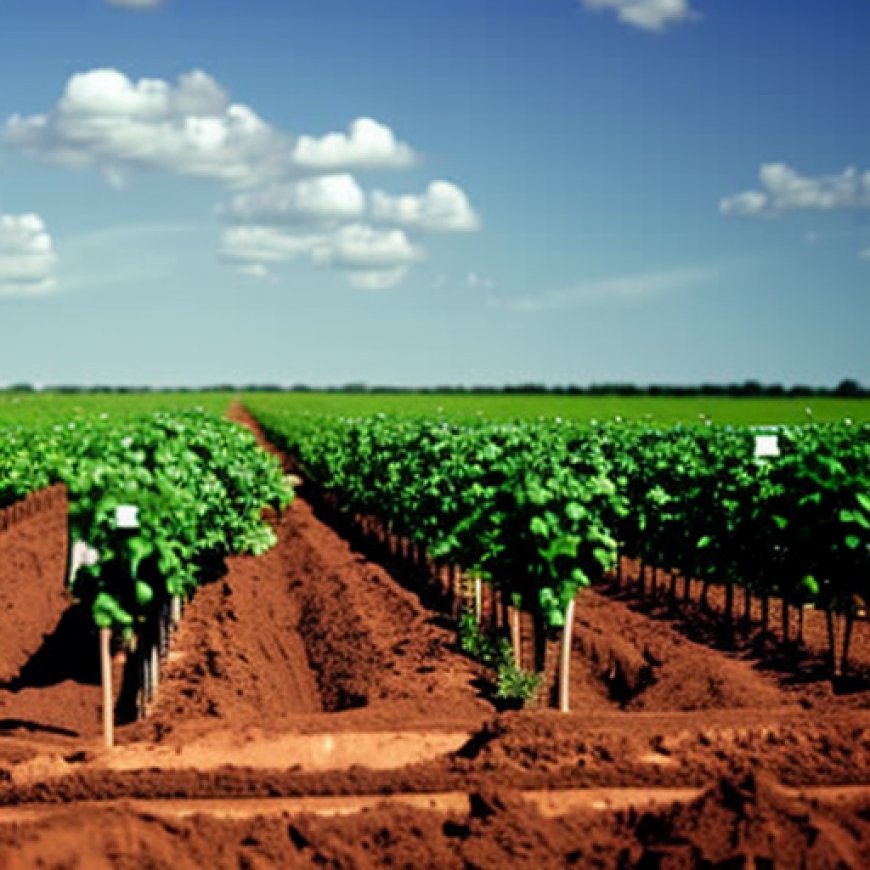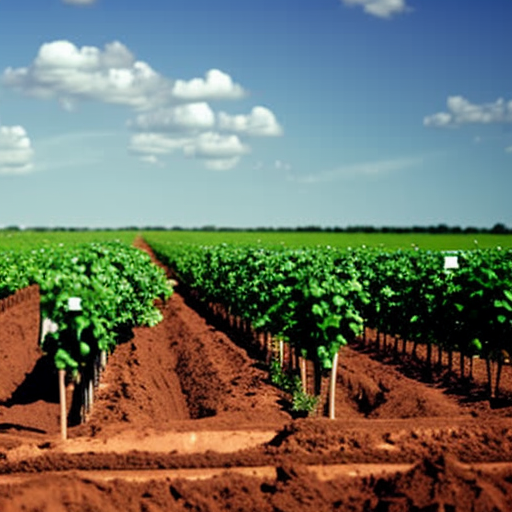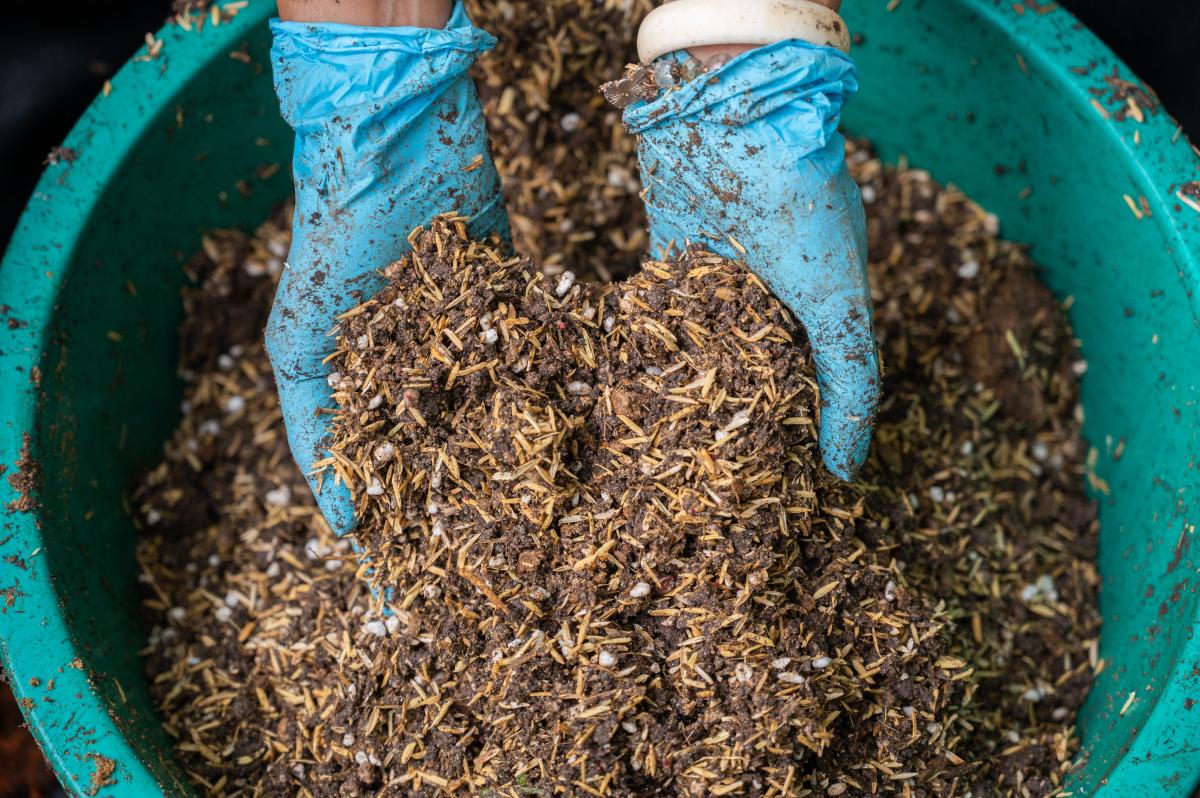InfoPoint conference: The potential of organic and biofertilizers for soil health management in Africa
InfoPoint conference: The potential of organic and biofertilizers for soil health management in Africa European Union



The Potential of Organic and Biofertilizers for Soil Health Management in Africa
In this conference, we aim to address the following questions:
Can the off-farm production of organic and biofertilizers contribute to improving soil health in Africa? What is the potential of organic and biofertilizers for soil health and soil fertility in Africa, and what does the current market look like?
Proper management of soil health not only enhances agricultural productivity but also mitigates the risk of soil degradation, erosion, and nutrient depletion. Moreover, it promotes biodiversity, fosters healthy ecosystems, and contributes to the overall well-being of the environment. As we are confronted by the pressing demands of food and nutrition security, environmental sustainability, and climate resilience, prioritizing effective soil fertility management is not just a necessity, it is an effective way to improve farming systems and an ethical responsibility.
Although not a panacea, there are opportunities for the off-farm production of organic and biofertilizers (OFBF), and markets are being developed. Especially since issues such as erosion, soil nutrient deficiencies, and acidity hamper the effectiveness of mineral fertilizers. In addition, there is a significant potential for the recycling and transformation of diverse off-farm wastes into high-quality organic fertilizers. There is also a strong potential for biofertilizers with the production and use of bacteria (N-fixation, P solubilisation) and fungi (biological life). There is, therefore, an urgent need for new strategies to reset the current system of fertilizer production and the recycling of residues and wastes.
The study aimed to address the current lack of information regarding the off-farm production, marketing, and use of OFBF. The team will share an overview of the description of the current state of production and selected business cases, origin of organic matter, quantities produced and prices, current state of demand and use, and an assessment of the potential supply of organic matter. The study combined a desktop review and 89 qualitative interviews across OFBF value chains with key informants spread across the sub-regions of Africa with a total of 12 countries. Interviewees included various stakeholders such as producers, researchers, farmer organizations, advisory services, policy makers, and farmers.
Various activities and business cases, like recycling agro-processing residues into compost and other organic fertilizers, involve municipal organic waste, crop residues, animal manure, as well as mixing with inorganic fertilizers, biochar, and liquid fertilizer from human urine. Despite overall small OF production quantities, high demand and price variations persist in most but not all countries. Many biofertilizer types lack product quality and verifiable efficacy results in local contexts. Successful rhizobia production and use exist. A high untapped potential exists for the (re)circulation of organic matter/nutrients from household and human waste. However, this requires addressing collection systems, standardization, quality enforcement, streamlining of policies and regulatory frameworks across sectors (waste, sanitation, agriculture), technical assistance, and integration into education, training, and research. Market incentives and improved business processes are crucial, necessitating a joint effort by private, public, and farmer organizations.
Speakers
- Leonard Mizzi, Head of Unit, INTPA F3-Sustainable Agri-Food systems and Fisheries
- Bernhard Freyer, Pierre Ellssel, and Fortunate Nyakanda, Scoping Study results
- Representative from Zim Earth Farms, African producer (Zimbabwe)
- Representative from Safisana, African producer (Ghana)
Language: English
Q&A session languages: English
Registration
SDGs, Targets, and Indicators
1. Which SDGs are addressed or connected to the issues highlighted in the article?
- SDG 2: Zero Hunger
- SDG 3: Good Health and Well-being
- SDG 6: Clean Water and Sanitation
- SDG 12: Responsible Consumption and Production
- SDG 13: Climate Action
- SDG 15: Life on Land
2. What specific targets under those SDGs can be identified based on the article’s content?
- SDG 2.4: By 2030, ensure sustainable food production systems and implement resilient agricultural practices that increase productivity and production, that help maintain ecosystems, that strengthen capacity for adaptation to climate change, extreme weather, drought, flooding and other disasters, and that progressively improve land and soil quality.
- SDG 3.9: By 2030, substantially reduce the number of deaths and illnesses from hazardous chemicals and air, water and soil pollution and contamination.
- SDG 6.3: By 2030, improve water quality by reducing pollution, eliminating dumping and minimizing release of hazardous chemicals and materials, halving the proportion of untreated wastewater and substantially increasing recycling and safe reuse globally.
- SDG 12.4: By 2020, achieve the environmentally sound management of chemicals and all wastes throughout their life cycle, in accordance with agreed international frameworks, and significantly reduce their release to air, water and soil in order to minimize their adverse impacts on human health and the environment.
- SDG 13.3: Improve education, awareness-raising and human and institutional capacity on climate change mitigation, adaptation, impact reduction and early warning.
- SDG 15.3: By 2030, combat desertification, restore degraded land and soil, including land affected by desertification, drought and floods, and strive to achieve a land degradation-neutral world.
3. Are there any indicators mentioned or implied in the article that can be used to measure progress towards the identified targets?
- Quantities produced and prices of organic and biofertilizers
- Current state of demand and use of organic and biofertilizers
- Assessment of the potential supply of organic matter
- Product quality and verifiable efficacy results of biofertilizers in local contexts
- Collection systems, standardization, and quality enforcement of organic waste
- Policies and regulatory frameworks across sectors (waste, sanitation, agriculture)
- Market incentives and improved business processes
Table: SDGs, Targets, and Indicators
| SDGs | Targets | Indicators |
|---|---|---|
| SDG 2: Zero Hunger | 2.4: By 2030, ensure sustainable food production systems and implement resilient agricultural practices that increase productivity and production, that help maintain ecosystems, that strengthen capacity for adaptation to climate change, extreme weather, drought, flooding and other disasters, and that progressively improve land and soil quality. | – Quantities produced and prices of organic and biofertilizers – Current state of demand and use of organic and biofertilizers |
| SDG 3: Good Health and Well-being | 3.9: By 2030, substantially reduce the number of deaths and illnesses from hazardous chemicals and air, water and soil pollution and contamination. | – Product quality and verifiable efficacy results of biofertilizers in local contexts |
| SDG 6: Clean Water and Sanitation | 6.3: By 2030, improve water quality by reducing pollution, eliminating dumping and minimizing release of hazardous chemicals and materials, halving the proportion of untreated wastewater and substantially increasing recycling and safe reuse globally. | – Collection systems, standardization, and quality enforcement of organic waste |
| SDG 12: Responsible Consumption and Production | 12.4: By 2020, achieve the environmentally sound management of chemicals and all wastes throughout their life cycle, in accordance with agreed international frameworks, and significantly reduce their release to air, water and soil in order to minimize their adverse impacts on human health and the environment. | – Policies and regulatory frameworks across sectors (waste, sanitation, agriculture) |
| SDG 13: Climate Action | 13.3: Improve education, awareness-raising and human and institutional capacity on climate change mitigation, adaptation, impact reduction and early warning. | – Market incentives and improved business processes |
| SDG 15: Life on Land | 15.3: By 2030, combat desertification, restore degraded land and soil, including land affected by desertification, drought and floods, and strive to achieve a land degradation-neutral world. | – Collection systems, standardization, and quality enforcement of organic waste |
Behold! This splendid article springs forth from the wellspring of knowledge, shaped by a wondrous proprietary AI technology that delved into a vast ocean of data, illuminating the path towards the Sustainable Development Goals. Remember that all rights are reserved by SDG Investors LLC, empowering us to champion progress together.
Source: international-partnerships.ec.europa.eu

Join us, as fellow seekers of change, on a transformative journey at https://sdgtalks.ai/welcome, where you can become a member and actively contribute to shaping a brighter future.







